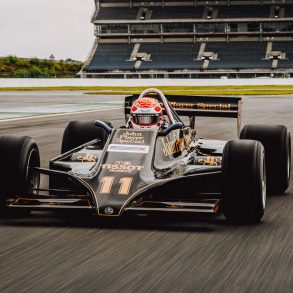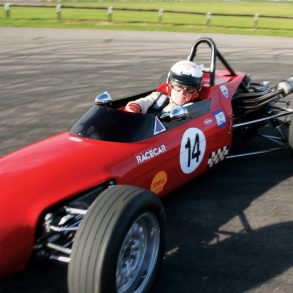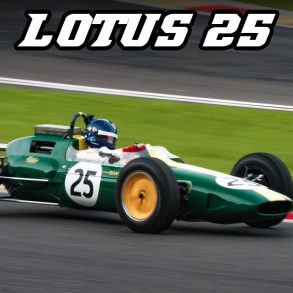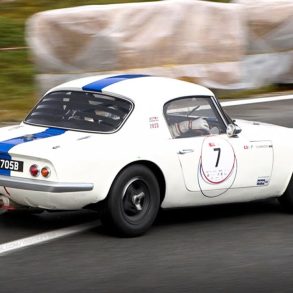Throughout my racing career I drove 11 different Lotus racing cars, but without doubt the most significant was the Lotus 39, the car that I used between 1967 and 1970.
Jim Clark had used it in the 1966 Tasman Series winning the Warwick Farm round. I had been using a Lotus 32 with a 1.5-liter Ford engine, as part of the Total Team. Come the end of the series, it seemed like a logical step to move up to the 39, especially as it came with a 2.5-liter Climax. My first year with the car in ’67 was very successful with a 5th at Warwick Farm and a very satisfying 2nd at Sandown behind Jim Clark.
In my experience, the Lotus 39 was a chassis that did everything right. Being a monocoque, it was strong; its handling was perfect and, later on, easily adapted to the fitting of wings. However, while the chassis was perfect for its time, I was let down by engines. Besides being quickly outdated, the original Climax engine was cracked and while we were to receive support from Repco for the engine, for almost two years it was just a matter of patching up what we had.
Then Repco launched their new V-8 engines and we bought one for the car for late 1968 and into 1969. The cost of the Repco engine was AUS$8,500 and just to put it into prospective, I had just bought a house for AUS$20,000. I remember that three of us got the new engines at the same time—myself, David McKay and Ron Phillips for Johnny Harvey. The Lotus 39 adapted very easily to the new engine and potentially it looked a winner. However, there were teething problems with the engine and, while it was supposed to rev out to 9,000 rpm, it got nowhere near that. There were compatibility problems between the cylinder block and heads and in the end Repco improved the blocks and gave one each to the three of us.
We eventually got it all together and I finished 3rd in the 1968 Australian Grand Prix, but the best result I managed with the car was a 1st in the 1969 Japanese Grand Prix, which was very satisfying.
The Lotus 39 was a lovely car to drive but in a way it was frustrating. Having a great car—for four years with a good chassis, combined with just two years with good powerplants—doesn’t win championships.
As told to Patrick Quinn










